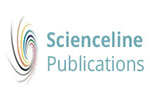(2024) Effects of Different Methods of Ovulation Induction on Sex Hormones in Serum, and Meat of Rabbit Does. World's Veterinary Journal. pp. 117-128. ISSN 2322-4568
|
Text
WVJ14(1)117-128,2024.pdf - Published Version Download (426kB) |
Abstract
High indicators of reproductive function in rabbits can be achieved using hormonal inducers of ovulation, in particular analogs of gonadotropin-releasing hormone, serum, and chorionic gonadotropins. Therefore, the aim of this study was to evaluate the dynamics of sex hormones in the blood serum and meat of rabbit does during ovulation stimulation over 5 consecutive pregnancies. For this purpose, 60 Hyla rabbit does were randomly divided into five groups of 12, ensuring four animals per group with three replicates. Animals of the first and second experimental groups, animals received intramuscular injections of serum gonadotropin, 40 IU and 25 IU respectively, three days prior to artificial insemination. Females of the third and fourth groups were administered combined doses of serum and chorionic gonadotropins (40 IU and 24 IU, respectively) during the same period. Rabbits of the control group were stimulated to ovulate by subcutaneous injection of 0.2 ml analog of gonadotropinreleasing hormone after artificial insemination. Long-term administration of gonadotropins revealed dose-dependent effects. Hyperprogesteronemia was detected in rabbit does (40 IU), while hyperandrogenia was noted in females (24 IU) during the combined administration of gonadotropins. The use of serum gonadotropin at a dose of 25 IU contributed to an increase in the level of follicle-stimulating, luteinizing hormone and progesterone while decreasing 17β-estradiol. A high dose (40 IU) in rabbit does did not cause significant fluctuations of hormones in blood serum, but decreased luteinizing hormone and progesterone. Long-term use of a gonadotropin-releasing hormone analog was accompanied by a pronounced decrease in the level of luteinizing hormone, as well as 17β-estradiol. However, the meat of all experimental animals did not increase the content of steroid hormones (testosterone and 17β-estradiol). It can be concluded that ovulation stimulation in rabbit does using a serum gonadotropin dose of 25 IU and the recommended dose of a gonadotropin-releasing hormone analog does not negatively impact the hormonal balance. © The Author(s) 2024. All Rights Reserved.
| Item Type: | Article |
|---|---|
| Keywords: | chorionic gonadotropin; estradiol; follitropin; gonadorelin; gonadotropin; luteinizing hormone; progesterone; sex hormone; testosterone, animal experiment; animal food; animal housing; animal tissue; Article; artificial insemination; blood sampling; controlled study; doe (mammal); experimental design; female; hormone blood level; hormone determination; infant; Leporidae; long term care; nonhuman; ovulation induction; pregnancy; rabbit meat; statistical analysis |
| Subjects: | S Agriculture > SF Animal culture |
| Divisions: | World's Veterinary Journal (WVJ) |
| Page Range: | pp. 117-128 |
| Journal or Publication Title: | World's Veterinary Journal |
| Journal Index: | Scopus |
| Volume: | 14 |
| Number: | 1 |
| Publisher: | Scienceline Publication, Ltd |
| Identification Number: | https://doi.org/10.54203/scil.2024.wvj15 |
| ISSN: | 2322-4568 |
| Depositing User: | Dr. Alireza Sadeghi |
| URI: | http://eprints.science-line.com/id/eprint/1212 |
Actions (login required)
 |
View Item |


 Dimensions
Dimensions Dimensions
Dimensions